
David Beaton was Archbishop of St Andrews and the last Scottish cardinal prior to the Reformation.
James Beaton (1473–1539) was a Roman Catholic Scottish church leader, the uncle of David Cardinal Beaton and the Keeper of the Great Seal of Scotland.
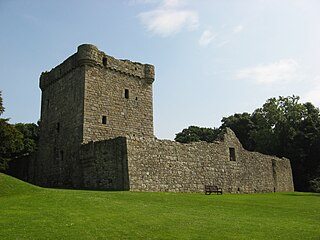
Lochleven Castle is a ruined castle on an island in Loch Leven, in the Perth and Kinross local authority area of Scotland. Possibly built around 1300, the castle was the site of military action during the Wars of Scottish Independence (1296–1357). In the latter part of the 14th century, the castle was granted to William Douglas, 1st Earl of Douglas, by his uncle. It remained in the Douglases' hands for the next 300 years. Mary, Queen of Scots, was imprisoned there in 1567–68, and forced to abdicate as queen, before escaping with the help of her gaoler's family. In 1588, the queen's gaoler inherited the title of Earl of Morton, and moved away from the castle. In 1675, Sir William Bruce, an architect, bought the castle and used it as a focal point for his garden; it was never again used as a residence.
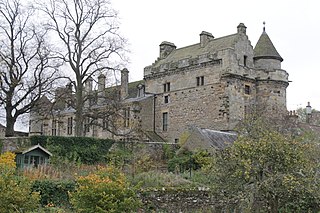
Falkland Palace, in Falkland, Fife, Scotland, is a royal palace of the Scottish Kings. It was one of the favourite places of Mary, Queen of Scots, providing an escape from political and religious turmoil. Today it is under the stewardship of Ninian Stuart, who delegates most of his duties to The National Trust for Scotland. The Chapel Royal in the Palace is dedicated to Thomas the Apostle, and is also open to the public and reserved for Catholic worship.
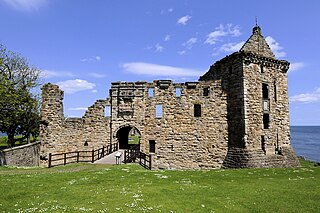
St Andrews Castle is a ruin located in the coastal Royal Burgh of St Andrews in Fife, Scotland. The castle sits on a rocky promontory overlooking a small beach called Castle Sands and the adjoining North Sea. There has been a castle standing at the site since the times of Bishop Roger (1189–1202), son of the Earl of Leicester. It housed the burgh’s wealthy and powerful bishops while St Andrews served as the ecclesiastical centre of Scotland during the years before the Protestant Reformation. In their Latin charters, the Archbishops of St Andrews wrote of the castle as their palace, signing, "apud Palatium nostrum."

Falkland, previously in the Lands of Kilgour, is a village, parish and former royal burgh in Fife, Scotland, at the foot of the Lomond Hills. According to the 2008 population estimate, it has a population of 1,180.
Sir James Melville (1535–1617) was a Scottish diplomat and memoir writer, and father of the poet Elizabeth Melville.

Andrew Melville Hall is a student hall of residence of the University of St Andrews located in St Andrews, Fife, Scotland. It was built in 1967 in the brutalist style, and it accommodates approximately 275 students.

The Chancellor of the University of St Andrews is the titular head of the University of St Andrews. Their duties include conferring degrees, promoting the university's image throughout the world, and furthering the university's interests within and outwith Scotland. The Chancellor does have the power to refuse an "improvement in the internal arrangements of the University", however, there is no evidence of any Chancellor using this effective veto over the University Court.
George Gledstanes was an Archbishop of St Andrews during the seventeenth century.

Melville House is a 1697 house that lies to the south side of the Palace of Monimail near Collessie in Fife, Scotland. It has been a school and a training base for Polish soldiers who had arrived in Scotland after the 51st Highland Division had been forced to surrender at Saint-Valery-en-Caux in 1940.
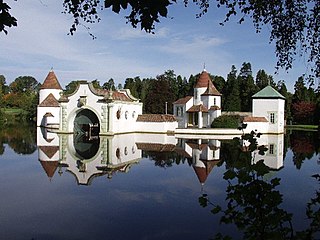
Craigtoun Country Park is a country park located approximately 4 miles to the south-west of St Andrews in the county of Fife, Scotland. The site is currently owned by Fife Council, with park amenities being operated as of 2012 by the charitable organisation Friends of Craigtoun Park.
Sir John Melville of Raith was laird of Raith in Fife, Scotland. He was active in the Scottish court in the second quarter of the 16th century, but was executed for his support of the Protestant cause.
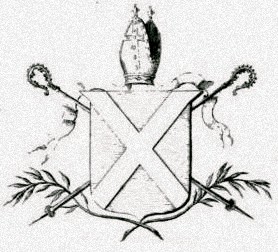
The Archdiocese of St Andrews was a territorial episcopal jurisdiction of the Catholic Church in early modern and medieval Scotland. It was the largest, most populous and wealthiest diocese of the medieval Scottish Catholic church, with territory in eastern Scotland stretching from Berwickshire and the Anglo-Scottish border to Aberdeenshire.

Clan Bethune is a name for one the Scottish families using the last name of Bethune, in this case descendants of the lairds of Balfour in Fife, an estate in the Lowlands parish of Markinch. Originating before the year 1000 in the town of Béthune, then in the county of Flanders, over the centuries the pronunciation of the family name shifted from the original French bay-tune to the Scots bee-t'n, usually written Beaton. From about 1560, members of the family started using the French spelling again.

The siege of St Andrews Castle (1546–1547) followed the killing of Cardinal David Beaton by a group of Protestants at St Andrews Castle. They remained in the castle and were besieged by the Governor of Scotland, Regent Arran. However, over 18 months the Scottish besieging forces made little impact, and the Castle finally surrendered to a French naval force after artillery bombardment. The Protestant garrison, including the preacher John Knox, were taken to France and used as galley slaves.

Strathtyrum is a 400-acre (160 ha) country estate in the north-western outskirts of St Andrews, Fife, Scotland. It is accessed via the A91.
John Boswell of Balmuto (1546-1610) was a Scottish landowner and courtier.
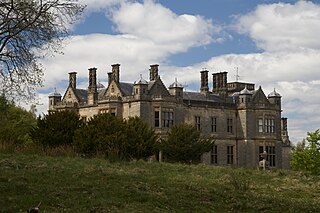
The House of Falkland, in Falkland, Fife, Scotland, is a 19th-century country house and has been one of the homes of John Crichton-Stuart, 3rd Marquess of Bute and the Crichton-Stuart family. The house has been designed in the 19th-century revival of late 16th and early 17th-century Elizabethan and Jacobean styles called Jacobethan.














